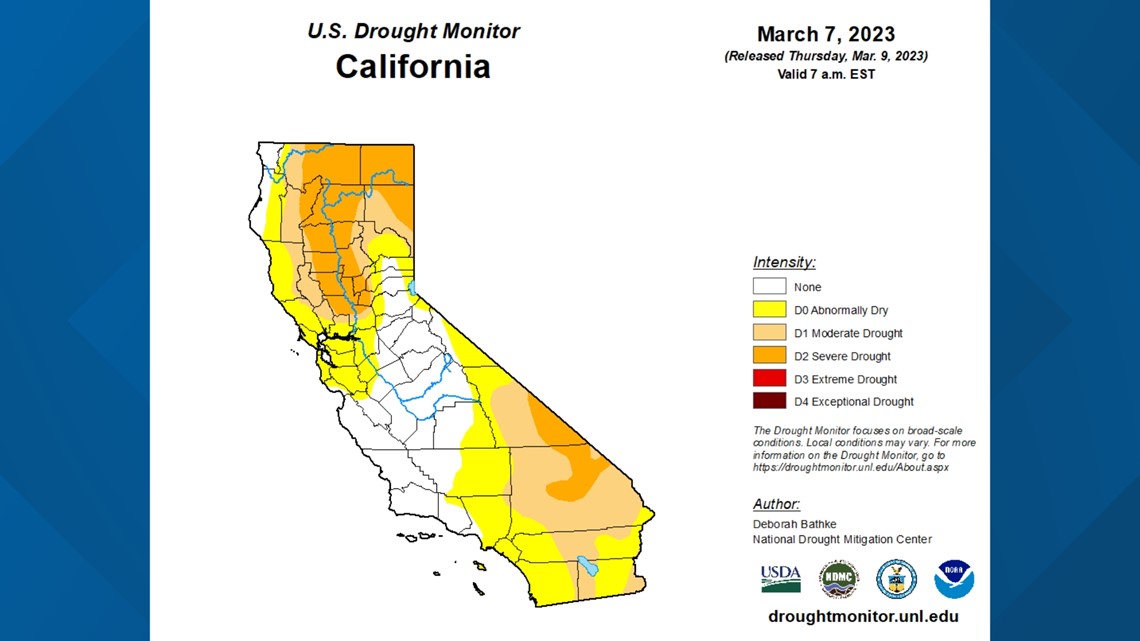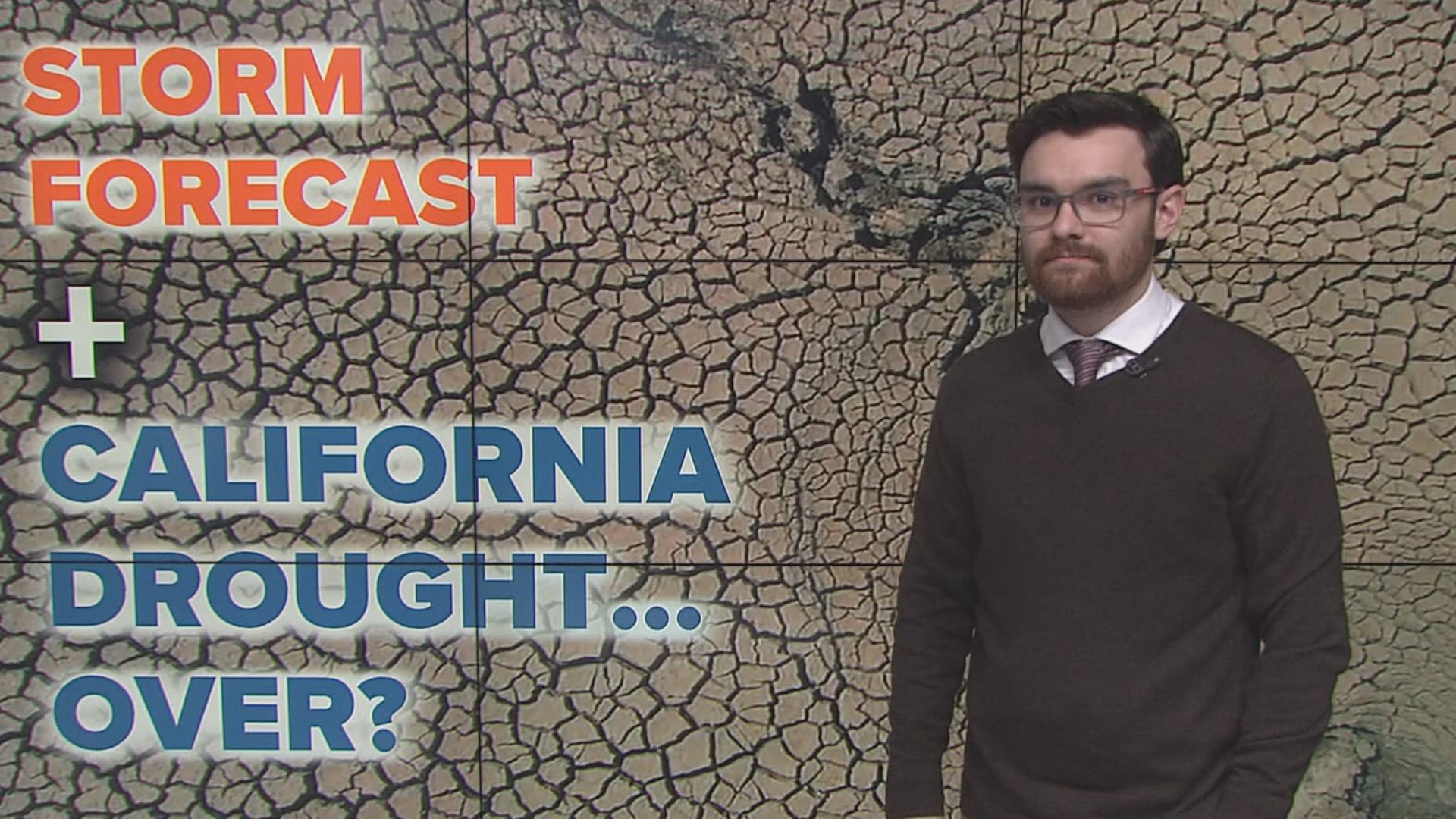SACRAMENTO, Calif. —
Following three years of drought, this winter has brought an unexpected deluge to the state, leading some experts to declare the drought over.
The state once again finds itself in a wet period thanks to a couple of atmospheric rivers pointed at the state. Many areas in the Sierra have already surpassed 600 inches of snowfall and statewide the snowpack has bumped up to 212% of normal to date. These numbers will continue to rise with the higher elevations of the Sierra expected to receive another 100" of snow in the coming days.
Although the latest drought monitor showed much improvement, much of the state remains in some sort of drought or abnormally dry conditions. These numbers continue to improve with every drought update thanks to persistent storm activity moving into California from the Pacific.


The deep snowpack will likely fill most of California’s reservoirs once the spring and early summer melting period wraps up. Questions remain for Shasta and Trinity lakes, located in the northern reaches of the state. The reservoirs dropped exceptionally low thanks to the drought and those areas haven’t seen the record precipitation like the basins further south have seen. Trinity is currently at 33% of capacity while Shasta is at 63%.
However, in terms of total surface water availability statewide, the short term recent drought is still effectively over but long term drought remains due to groundwater deficits.
"I would say, that the parade of atmospheric rivers, and then some of the continuation of what conditions really has sort of put the nail in the coffin for that drought,” said John Abatzoglou, UC Merced Professor of Climatology.
Issues remain with chronic overdraft of groundwater in the Central Valley but the excessive rain in the Central Valley has helped.
The state would need to have many, many wet winters to make significant gains in groundwater storage. Even with El Nino expected next winter, which typically brings wetter conditions, California’s climate has been increasingly unpredictable due to climate change.
“I would say our hydro climate is reliably unreliable. We just simply do not have normal water years,” said Abatzoglou.
Improvements in water management will be of the upmost importance as climate whiplash continues to worsen.
"We cannot manage water in California as we've had for the last 40-50 years with managing these boom and bust cycles. We have to recalibrate how we plan for water under management, with the understanding that we're going to go years with very little precipitation, and that when it comes all at once, we have to have a myriad of local projects to capture water to be used, I think more at a sub basin or regional level," said Barbara Barrigan-Parilla, Campaign Director for Restore the Delta.
WATCH ALSO:

















